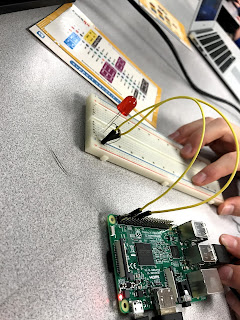IP
- What is a protocol?
"A well-known set of rules and standards used to communicate between machines."
The internet must follow a protocol so that all machines using it can effectively communicate.
- What is an Internet Protocol (IP) address?
An IP address is a number unique to each device on a network. It works a lot like a mailing address, where a device finds another address and also sends its return address so the two devices can communicate.
- How is it organized hierarchically?
The first numbers identify the country and regional network of the device, then the subnetworks, then the address of the specific device.
- How many bits are in an IPv4 address?
32
- How many IPv4 addresses does that mean there are?
2^32
- What is the difference between IPv6 and IPv4.
IPv6 has 128 bits, IPv4 has 32 bits.
- Why do we need IPv6?
IPv4 does not have enough possible addresses for all the devices in the world, so we have to add more bits.
- What is an IP packet?
An IP packet is a small package containing information. When information is sent, it can't all be sent together so it is broken up into packets. Each packet contains metadata designating what's in it and which packet it is in the sequence. The first packet must have metadata describing what is being sent and how many packets it will take, to make sure the receiving device receives everything correctly.
- What is the difference between an IP address and an IP Packet?
The IP address identifies a specific device, like a home address. Each device has its own IP address, and devices can ask DNS for other devices' IP addresses so they can communicate. An IP packet is the information the two devices send to each other.
- What is the purpose of the Domain Name System (DNS)?
The DNS allows devices to communicate with each other. One device may request the IP address of another device so that they can communicate. The DNS facilitates this communication by finding the IP address and providing it to the requesting device.

Comments
Post a Comment